
Temperate Forests Moderate Climates and Varied Trees

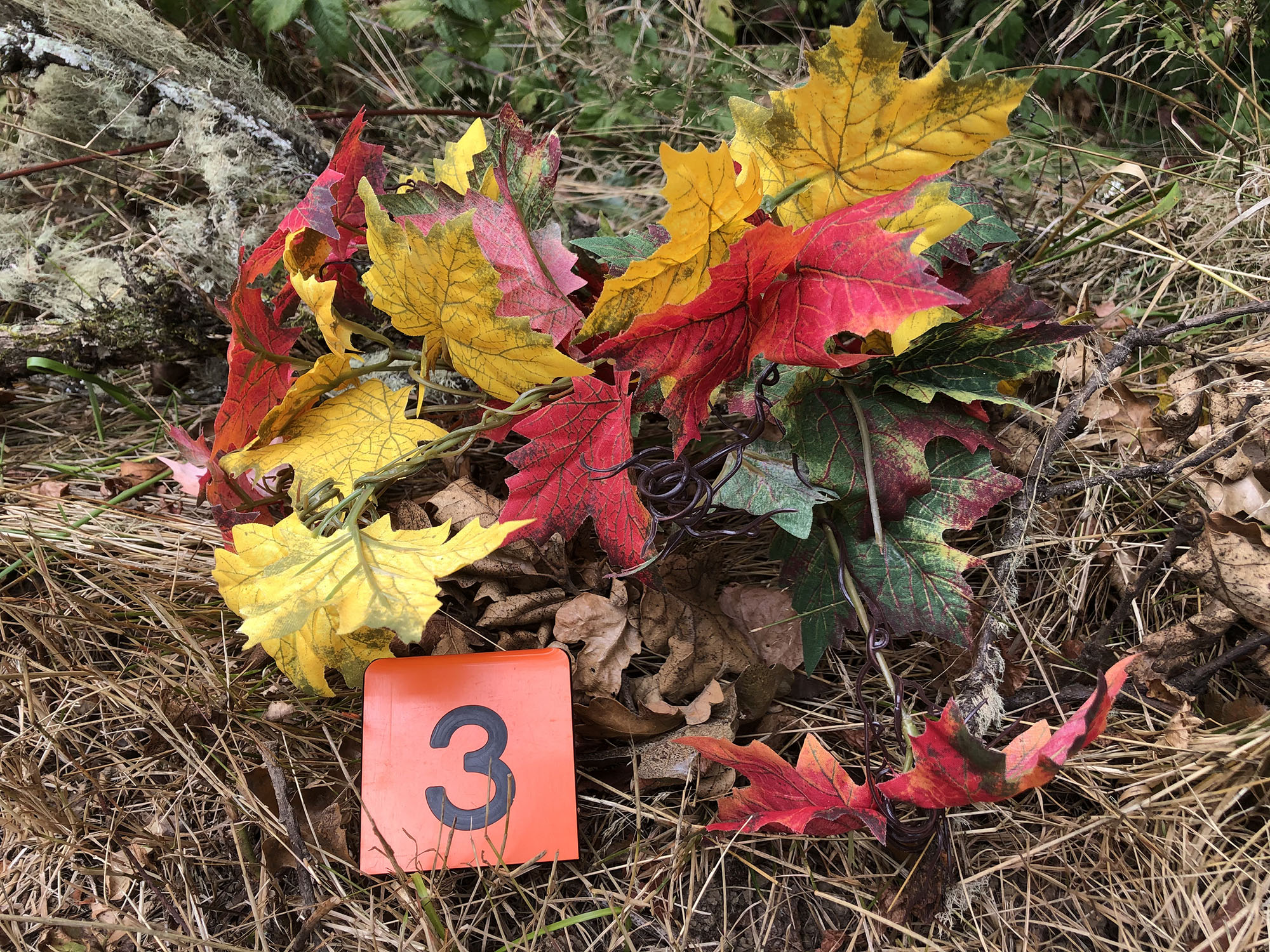
Temperate Forest Objectives
- Compare and contrast deciduous, coniferous, mixed, and rainforest temperate ecosystems.
- Explain the ecosystem role of features of complex old growth forests, including snags and nurse logs.
- Describe fern plants including their structures and ecological roles.
This video provides an introduction to the temperate forests, including how mixed forests of deciduous and coniferous trees occur.
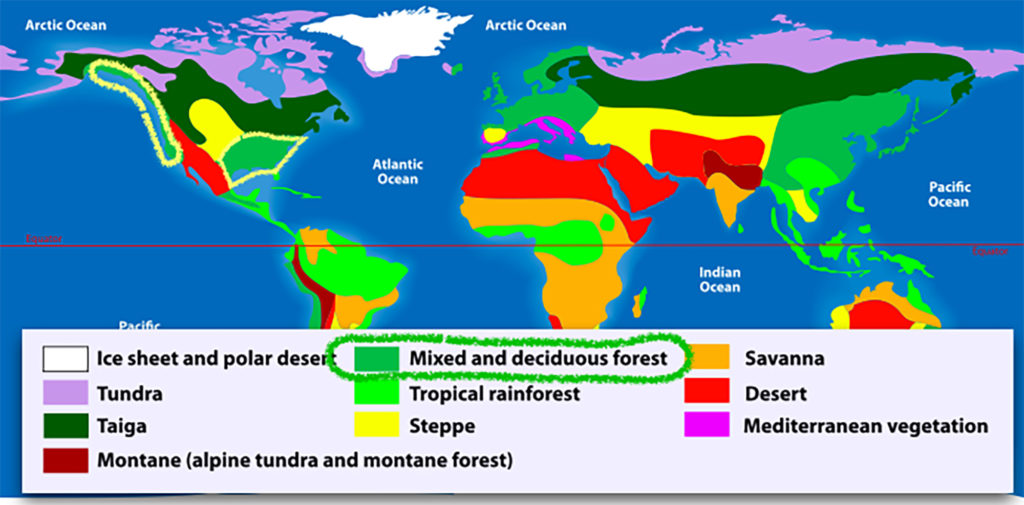
Temperate means moderate, and that describe these forests’ climate: not too hot and wet like a tropical rainforest; not too cold or drier like the taiga.

Temperate deciduous forests are found in regions that are slightly warmer and wetter when these trees do most of their growing. But the climate conditions are so similar to temperate coniferous, forests can be mixed with both types of trees.
Temperate Rainforests

We are heading to Cascadia State Park located on the west ascent of the Cascade Mountains, right off of Highway 20.
This video introduces the park, which receives enough annual moisture to be classified as a temperate rainforest.
Moisture in temperate rainforests support dense moss, ferns, and shrubs.
Forest Complexity

If we leave Cascadia State Park and head further east ascending the west side of the Cascade mountains, we arrive at Hackleman Creek. There is less moisture and it is cooler, but the conditions support a lush mixed forest.
This site has old-growth forest, with some conifers dated over 500 years old.
Older forests include the living and growing as well as the dying and decomposing. The continual cycling of nutrients is more evident as you walk over fallen logs and through piles of leaf litter.
Fallen tree trunks can act as “nurse logs,” supplying nutrients for the next generation of vegetation.
Nurse log along Alsea Falls trail in the Coastal Range
Nurse log along Hackleman trail in the Cascades range
Standing dead trees can provide food for small animals and nesting sites for birds.
This oak tree snag is hosting a variety of species.
Declining spotted owl populations nest in snags. This is a rehabilitated owl on display in the High Desert Museum (Bend, Oregon).
A continual threat to forests is fire from natural clauses like lightening or human activity like unattended campfires. The Smokey Bear (often called “Smokey the Bear”) campaign educates people about the risks associated with wildland fires.
This poster shows both coniferous and deciduous trees at risk from forest fires. We will have more on fire management in upcoming guides.
Ferns
When you walk through a forest, it is like being in another world. The light filters through leaves, sound is muffled by the vegetation, and moisture can be high.
Below the canopy of tallest tree branches, there are various layers of growth including the understory of shrubs and small plants on the forest floor. Ferns and mosses commonly thrive in these high moisture environments.
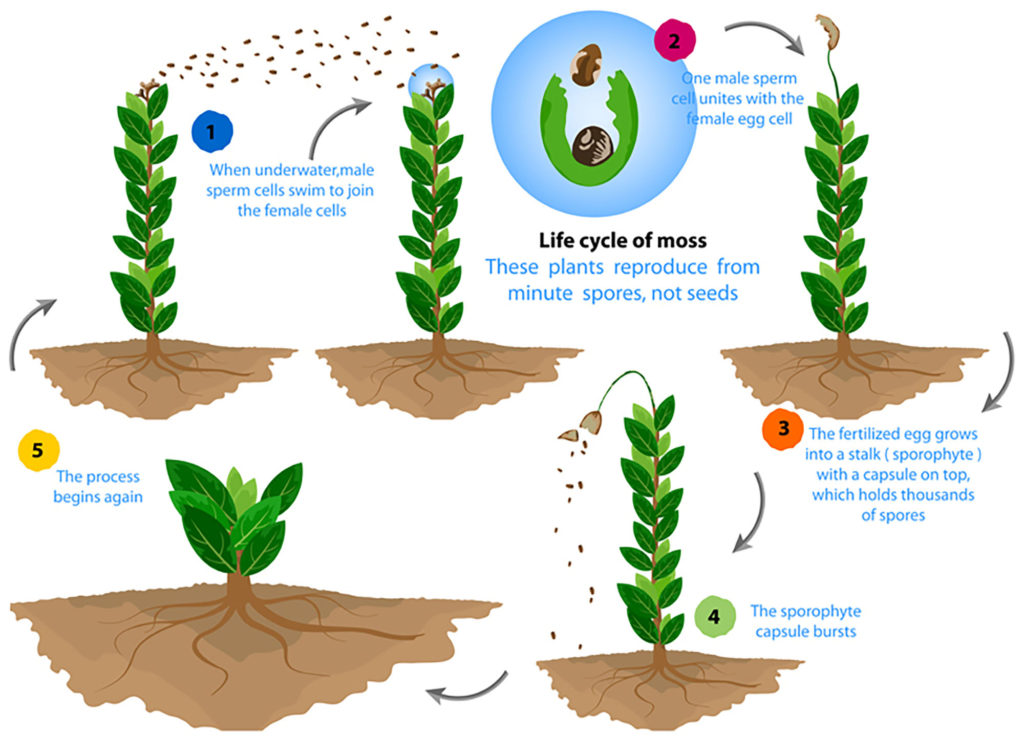
Moss are found throughout a wide range of forests.
From earlier in the course, are mosses vascular or nonvascular plants?
Ferns are vascular plants and have vessels to transport nutrient-rich fluids throughout their bodies. Like moss they have spores instead of seeds and water assists in spore dispersal.
Ferns have significantly different life cycles than moss. In moss, the spores are produced by small specialized structures called sporophytes. In ferns, spores are produced on the fronds (leaves).
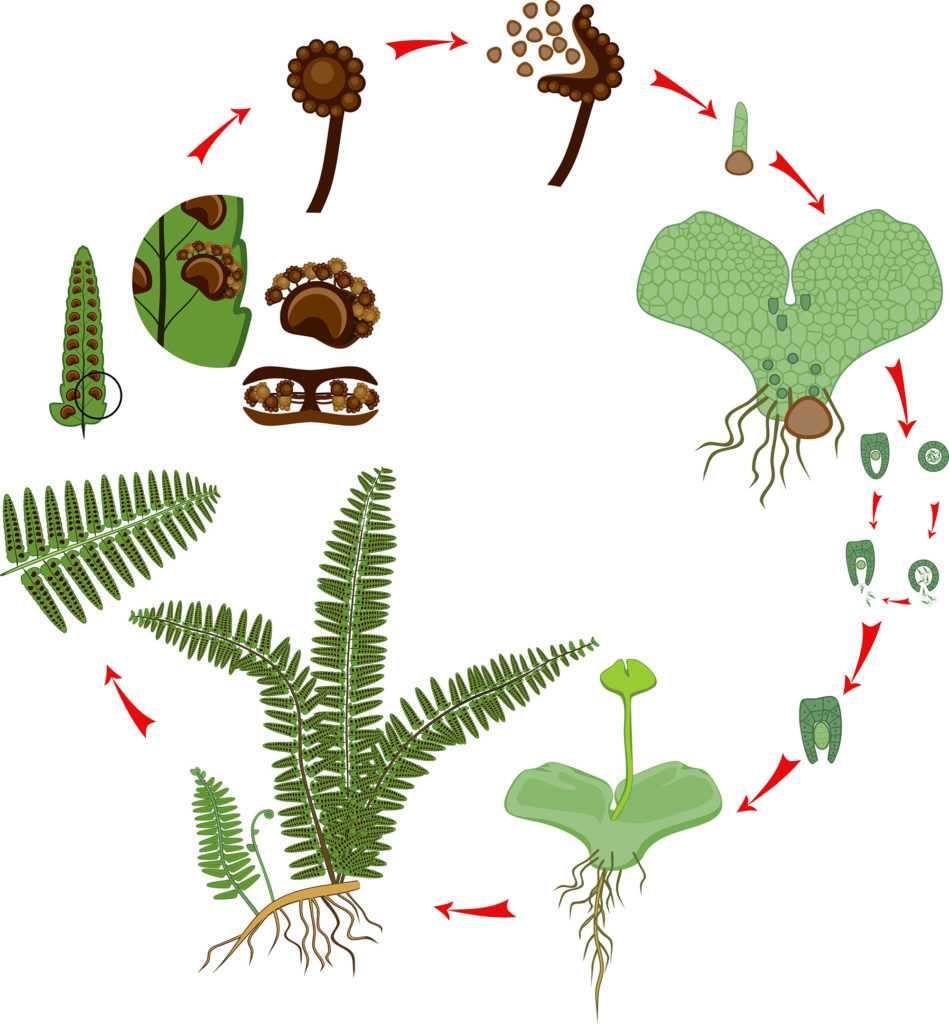
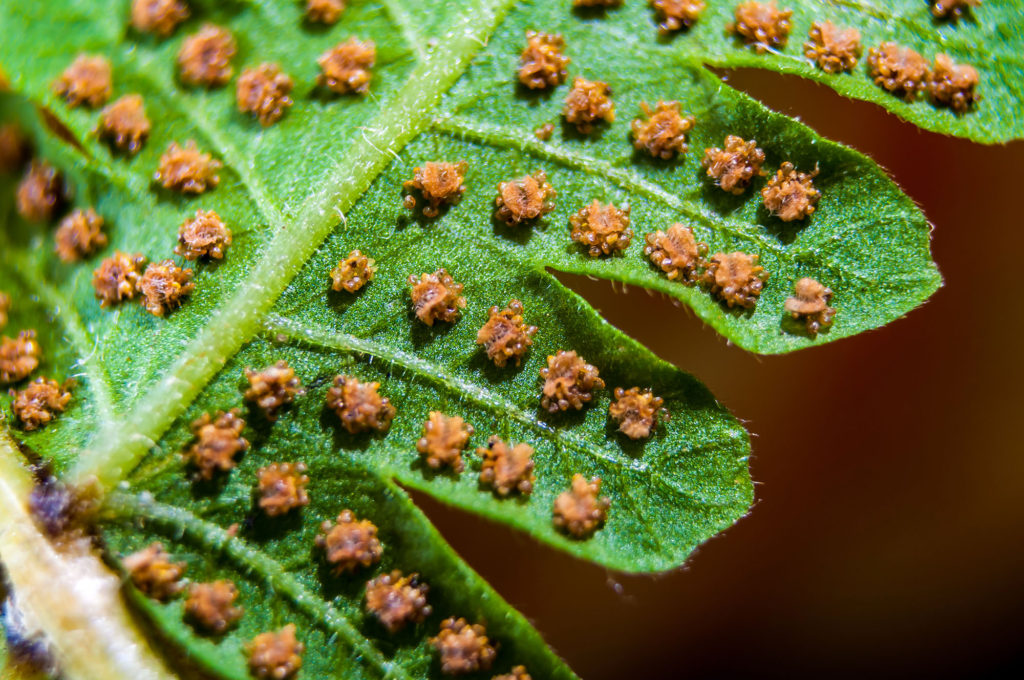
A close-up of the sori; packets of spores found on the bottom of a frond “leaf”.
Like moss, ferns have existed on earth for over 300 million years.
Often ferns look like they are growing on their own, not interacting with other species. Recent research suggests that ferns host many invertebrate species that live in their “leaves” (fronds), especially at the base of the plant. Also, birds and rodents eat the nutrient-rich spores.
In the next section we head to the equator and tropical rainforests.

Check your knowledge. Can you:
- compare and contrast deciduous, coniferous, mixed, and rainforest temperate ecosystems?
- explain the ecosystem role of features of complex old growth forests, including snags and nurse logs?
- describe fern plants including their structures and ecological roles?



